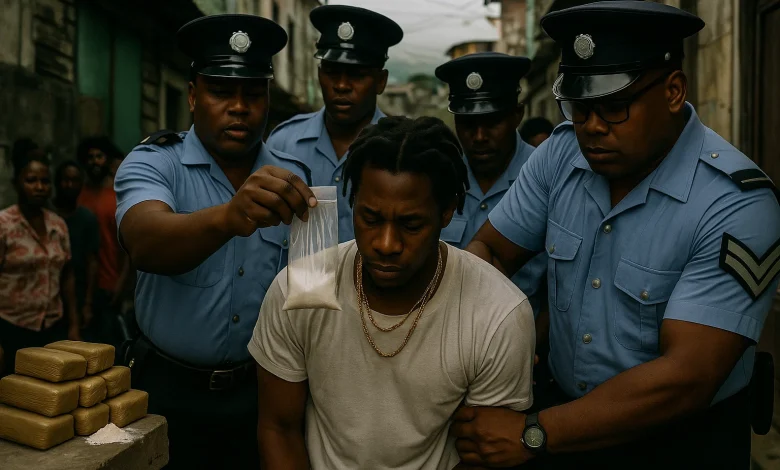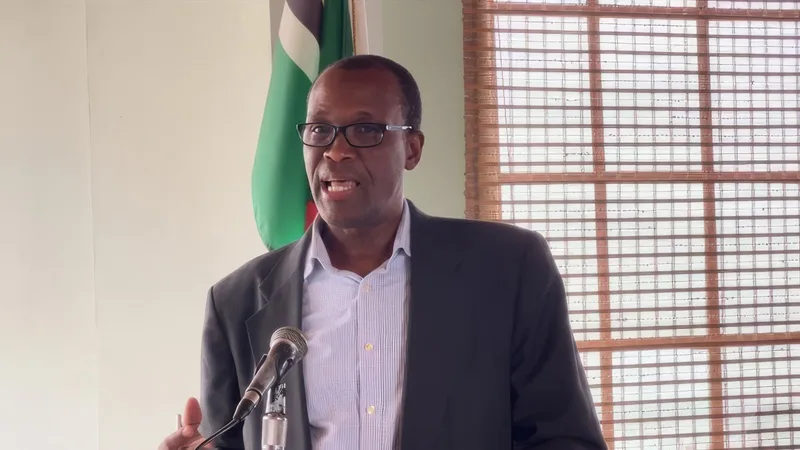Cocaine in Dominica: Trade & Trafficking

Cocaine in Dominica has long been a subject of regional concern, given the island’s location in the Eastern Caribbean and its proximity to major South American producers such as Colombia and Venezuela. Although Dominica is not a cocaine-producing country, its geographic position, maritime routes, and porous coastline have made it a transit point for traffickers moving narcotics to neighbouring islands, North America, and Europe. Over the years, patterns of seizures, court cases, and international reports reveal the island’s vulnerability to the global cocaine trade. From small seizures measured in kilograms during the early 2000s to a record-breaking multi-tonne bust in 2025, the evolution of Dominica’s cocaine trafficking story illustrates both the adaptability of criminal networks and the growing capacity of local law enforcement.
Historical development of cocaine trafficking through Dominica
Dominica has often been viewed as a smaller island with comparatively modest transit volumes. The primary drug markets in Dominica are cocaine and cannabis, and the island is “a transit country for both, destined for other Caribbean islands, North America or Europe”.
In earlier decades, cocaine produced in South America (primarily Colombia and Venezuela) found pathways through the Lesser Antilles and Eastern Caribbean toward key markets in North America and Europe. Dominica’s coastline, under-resourced border security, and relatively small size meant that it was not always the major stop but could serve as a waypoint or staging area for “go-fast” boats, hidden cargoes, or transfers between vessels. Caribbean maritime routes have long been exploited for cocaine movements.
By the 2000s and 2010s, Dominica’s law-enforcement frameworks had strengthened, and data on seizures started to become more visible. For example, a 2009 National Drug & Alcohol Information Network report noted 573 cases filed in a given period for drug-related offences.
Between 2010 and 2014, Dominica reported an important rise in cocaine seizures, moving from about 100 kg to 213 kg of cocaine seized (for that period), according to the government. Though modest when compared to larger transit states, this increase signals a growing enforcement attention and use of Dominica as a node in trafficking routes.
Dominica has never been a producer of cocaine but rather a transit or redistribution point, so its value lies less in domestic consumption and more in regional redistribution or onward shipment. Also, small island jurisdictions like Dominica face challenges of resources, capacity, and maritime surveillance, which traffickers exploit.
Cocaine Trade: Key Figures, Events & Trends
Here are several milestone figures and recent events that help illustrate the scope of the cocaine trade related to Dominica.
- 2010–2014: As mentioned, the National Drug Abuse Prevention Unit revealed that cocaine seizures in Dominica rose from approximately 100 kg in 2010 to about 213 kg by 2014.
- 2017 and 2018: The 2018 DADIN (Dominica Alcohol & Drug Information Network) report indicates that for 2017, about 196,824.90 grams (≈ 196.8 kg) of cocaine was seized; for 2018 the figure was about 79,476.3 grams (≈ 79.5 kg).
- October 2025: In what has been reported as the largest cocaine seizure in Dominica’s history, the police announced a haul of 1,732 kg of cocaine (1.73 metric tonnes) with a reported street value estimated at EC$46.764 million (Eastern Caribbean dollars), noting that one EC $ ≈ US$0.37, so roughly US$17 million.
- Alongside these drugs, 24 persons were arrested (19 males, 5 females), as part of “Operation Clean Street”.
- Transit Role & Regional Seizures: While specific data for Dominica is more limited, regional reports suggest that the Eastern Caribbean, including Dominica, is part of the corridor from South America toward North America and Europe. For example, a 2022 INTERPOL-led Caribbean operation reported 10.1 tonnes of cocaine seized region-wide, which highlights how the island operates amid larger flows.
These figures highlight several points: (1) the scale of trafficking associated with Dominica is rising (particularly the 2025 seizure); (2) the island still handles smaller volumes compared to major hubs, but nonetheless, significance grows; (3) the upward trend suggests that traffickers may be routing more via smaller islands to evade detection.
Why Dominica Matters in the Cocaine Ecosystem
There are several factors that explain Dominica’s relevance in the cocaine trafficking context:
- Geography & maritime access: Dominica lies in the Eastern Caribbean, and its position offers access for vessels moving from South American departure points (e.g., Venezuela) toward the eastern Caribbean, Puerto Rico, or onward to the US or Europe. Remote coastlines and island chain geography provide hiding spots for small vessel transfers.
- Transit vs destination: Dominica is primarily a transit point, not a major domestic consumption market for cocaine.
- Smaller scale but rising volume: Earlier seizures were modest (hundreds of kg), but recent ones are in tonnes, suggesting a shift in trafficking scale or detection capabilities.
- Legal & institutional frameworks evolving: The government has established institutions and legal regimes (e.g., FIU, customs, police drug squads) that support interdiction. But institutional capacity remains a challenge, which traffickers exploit.
- Regional connectivity and redistribution: Even when cocaine passes through Dominica, it may be reloaded or forwarded to other islands or into larger maritime container routes to Europe or North America. Regional reports on Caribbean-to-Europe shipments underline the broader network.
Trade Values & Economic Impacts
Estimating the economic value of the cocaine trade through Dominica is difficult because of its hidden nature, but some data points help:
- The 2025 seizure of 1.73 tonnes with an EC$46.764 million street value (≈ US$17 million) gives a sense of scale, albeit for one operation.
- Earlier, the 2010–2014 rise to 213 kg indicates growth; if a rough wholesale value per kg in the Caribbean region is taken (say US$25,000–US$40,000 per kg depending on purity and markup), then hundreds of kilograms equate to multi-million US$ flows.
- The institutional vulnerability of Dominica’s economy (for example, its Citizenship by Investment Programme accounting for some 29.5 % of GDP in recent years) means that illicit flows can have disproportionate local financial effects.
While domestic consumption is low relative to transit volumes, the presence of high-value shipments through Dominica can distort local economies, leading to money-laundering risks, corruption, informal financial flows, and undermining of governance.
Patterns, Methods & Risks
How traffickers move cocaine through Dominica, the common methods employed, and the risks and vulnerabilities that shape the island’s enforcement challenges.
Methods
- Go-fast boats and small craft: Traffickers often use high-speed boats to transport cocaine from coastal South America or the Lesser Antilles chain, hopping between islands, including Dominica.
- Hidden shipments via containers or couriers: Though less documented in Dominica than in larger hubs, regional analyses point to the use of containerized cargo and commercial shipments as traffickers seek to blend illicit with legitimate goods.
- Redistribution to other islands or onward markets: Once cocaine arrives in Dominica, it may be held temporarily, broken down, and forwarded onward, making the island a redistribution node rather than an ultimate destination.
Risks and vulnerabilities
- Limited enforcement capacity: Though frameworks exist, the island faces resource constraints in maritime patrol, customs inspections, intelligence capacity, and judicial follow-through.
- Drug-money laundering and corporate/financial pathways: Cocaine profits often require laundering. Dominica’s offshore structures, small financial system, and significant CBI (Citizenship by Investment) programme may create vulnerabilities, though authorities are aware and working to mitigate them.
- Spillover effects: Large shipments through Dominica risk triggering violence, firearms trafficking, corruption of officials, and social disruption. While Dominica’s domestic violence levels may be lower than some peers, the risk remains.
- Regional shifting of routes: As larger hubs tighten controls, traffickers may shift to smaller islands like Dominica, increasing load sizes or frequency, hence the jump in recent seizures.
Enforcement, Trends & Outlook
Dominica’s law-enforcement agencies, customs, maritime, police, drug squads and the Financial Intelligence Unit are increasingly active. For example, the 2025 seizure of 1.73 tonnes is a sign of both larger loads and increased detection efforts.
Mutual legal assistance (MLA) and international cooperation are significant: Dominica has made MLA requests in the years 2017–2021 (for drug-trafficking/ML investigations) and indicates traffickers using marine routes intercepted with over 300 kg of cocaine.
Going forward:
- Monitoring of shipments is likely to intensify, both by Dominica’s agencies and regional partners.
- Traffickers may shift to larger shipments or more novel routes (submersibles, hidden container shipments) to evade detection.
- The economic and governance challenges (small population, limited resources, high dependency on external flows) mean Dominica must continue building capacity: maritime patrols, intelligence sharing, and root-cause social interventions.
- Given the rise in seizures, the island may face increased pressure from traffickers seeking to re-route, possibly increasing risk of violence, corruption or influxes of illicit funds.
Concluding observations on Dominica’s cocaine trafficking landscape
Cocaine trafficking in Dominica has evolved from small-scale transhipment to occasional high-value seizures that expose the island’s place in global supply chains. Historical patterns of modest seizures in the early 2010s have given way to record-breaking confiscations such as the 1.73-tonne haul in 2025. With values in the tens of millions of dollars, the trade has the potential to destabilise the economy and society if not carefully managed. Dominica’s authorities, equipped with stronger legislation and regional support, are confronting these challenges, but the island’s vulnerabilities as a small maritime nation mean that the risk of cocaine trafficking will remain a central issue for years.




